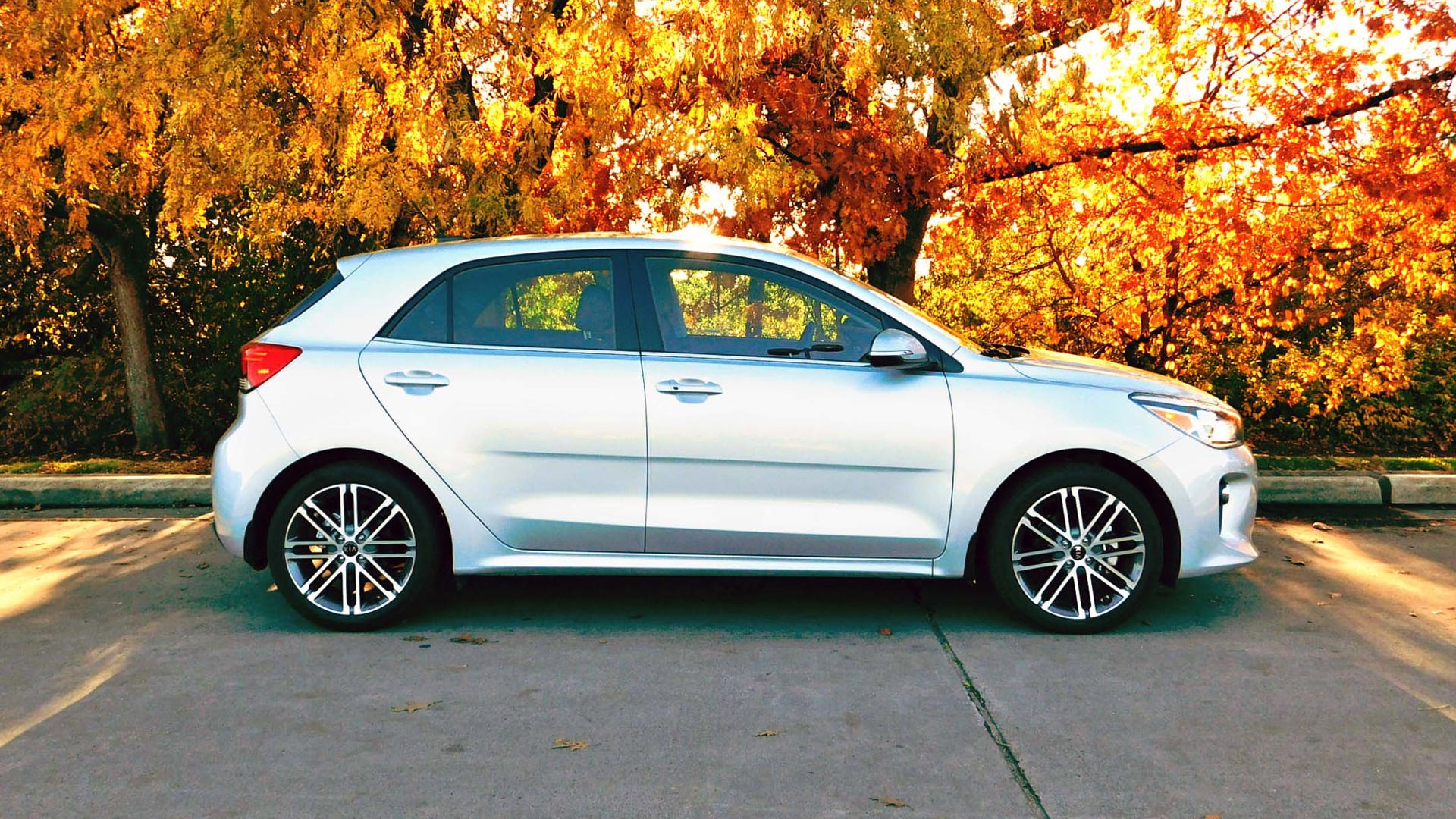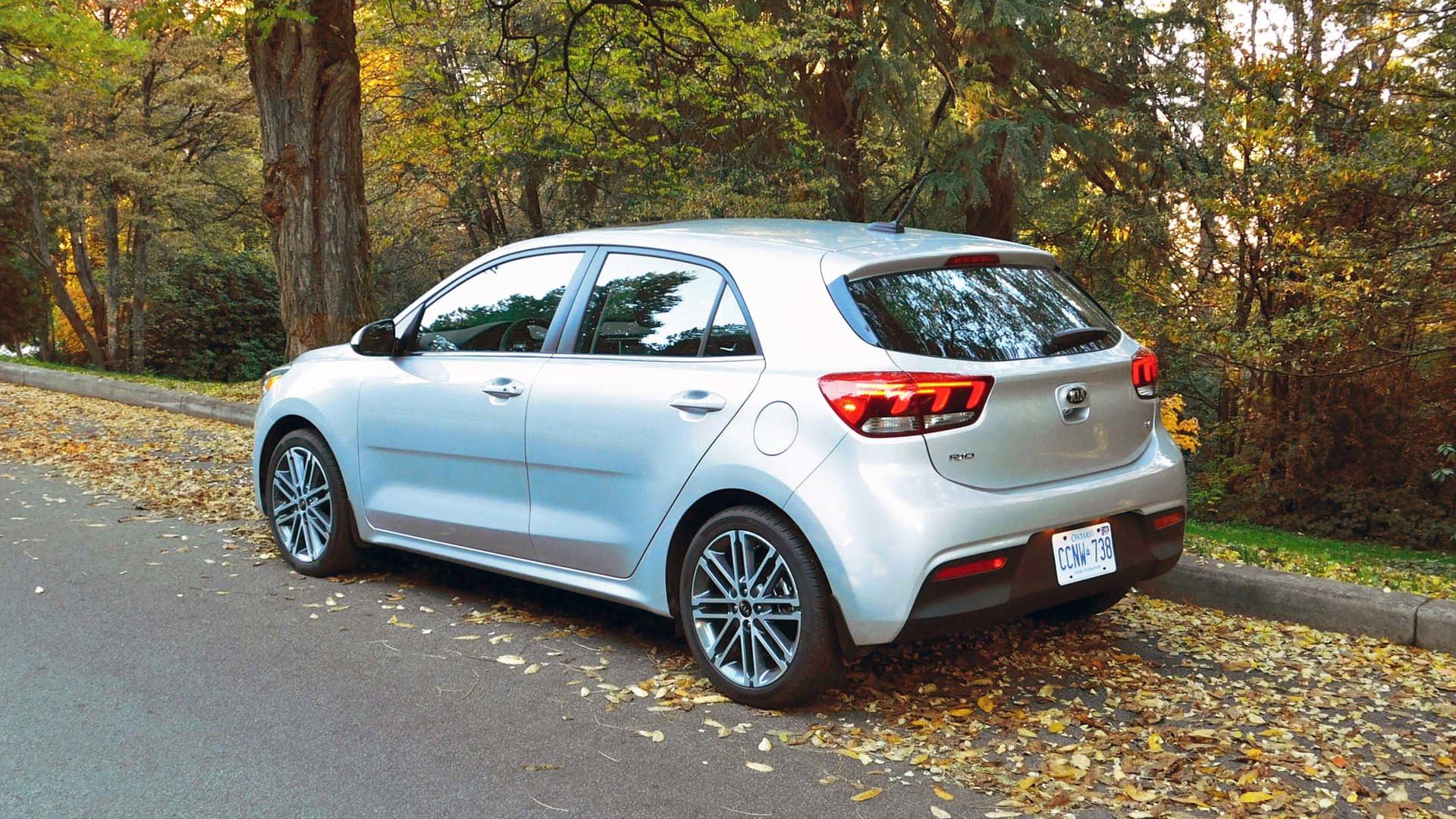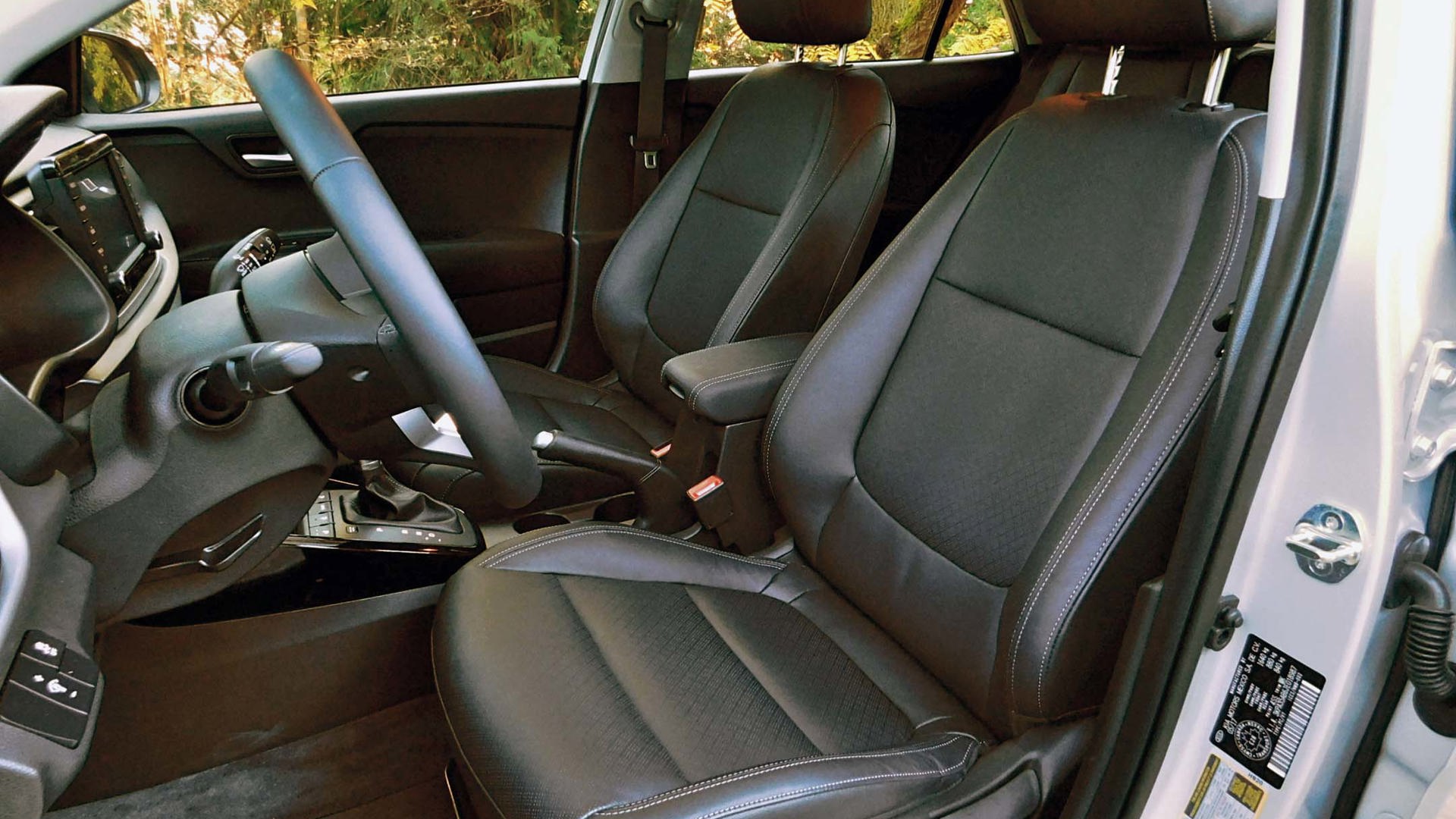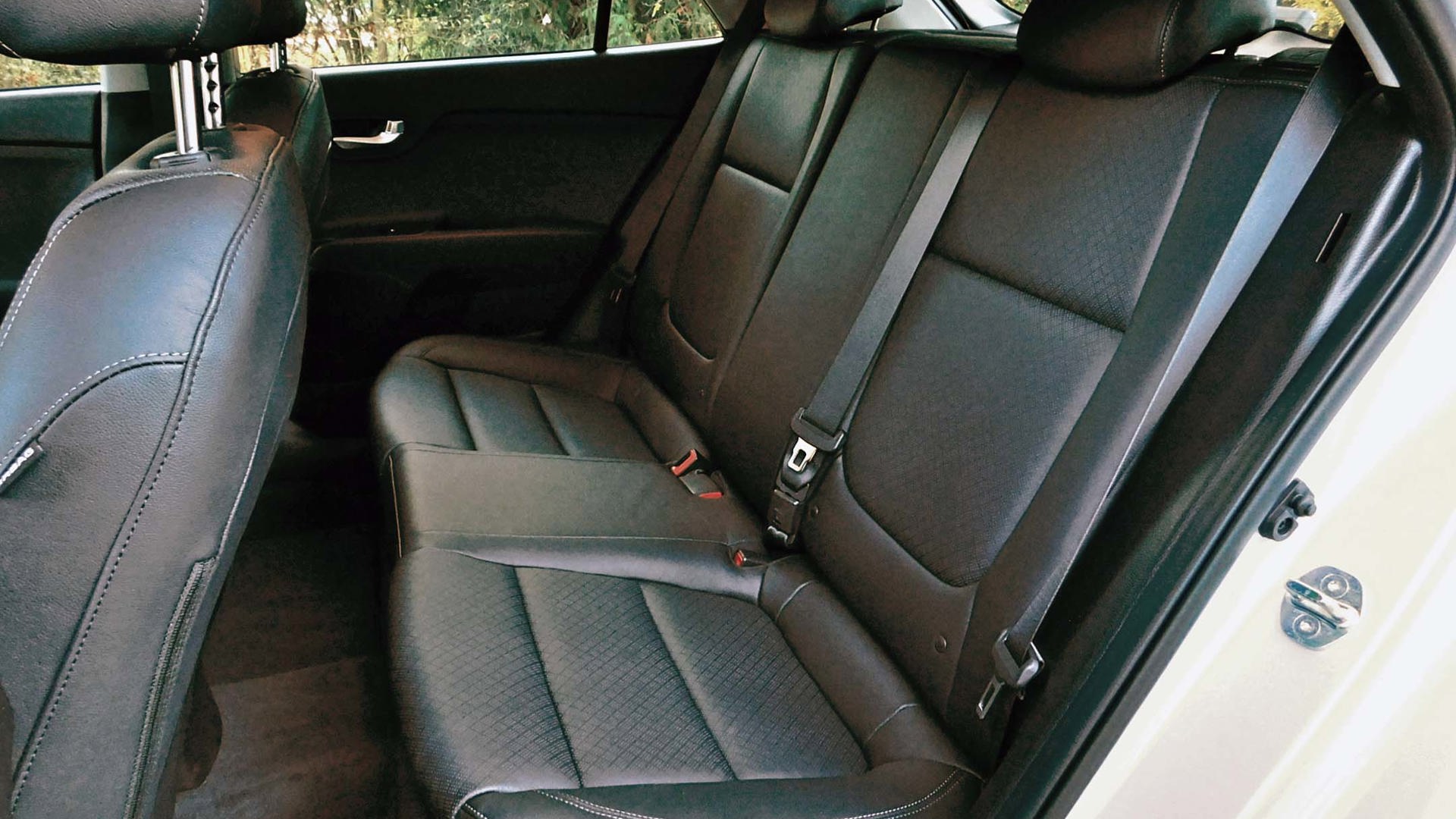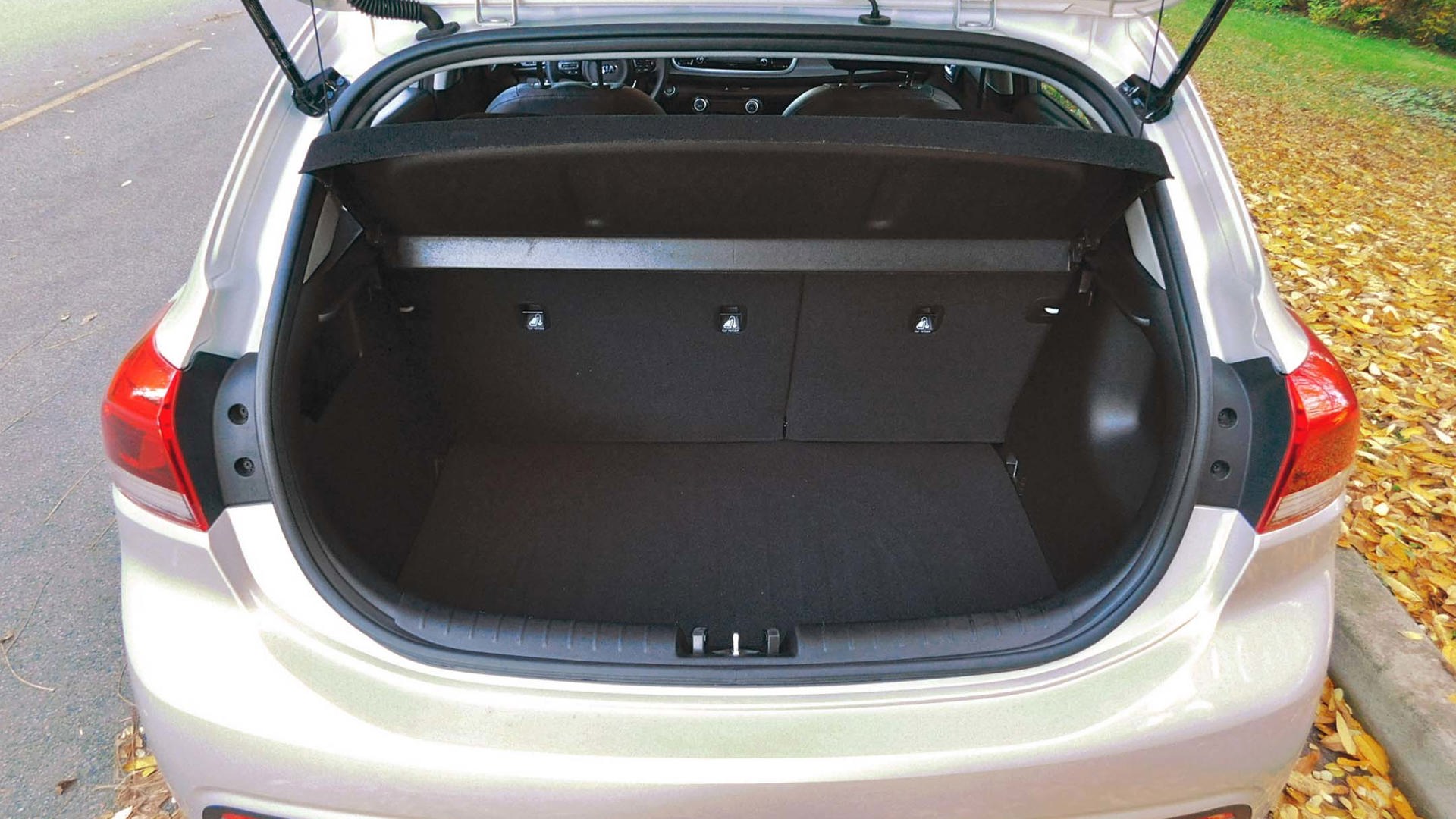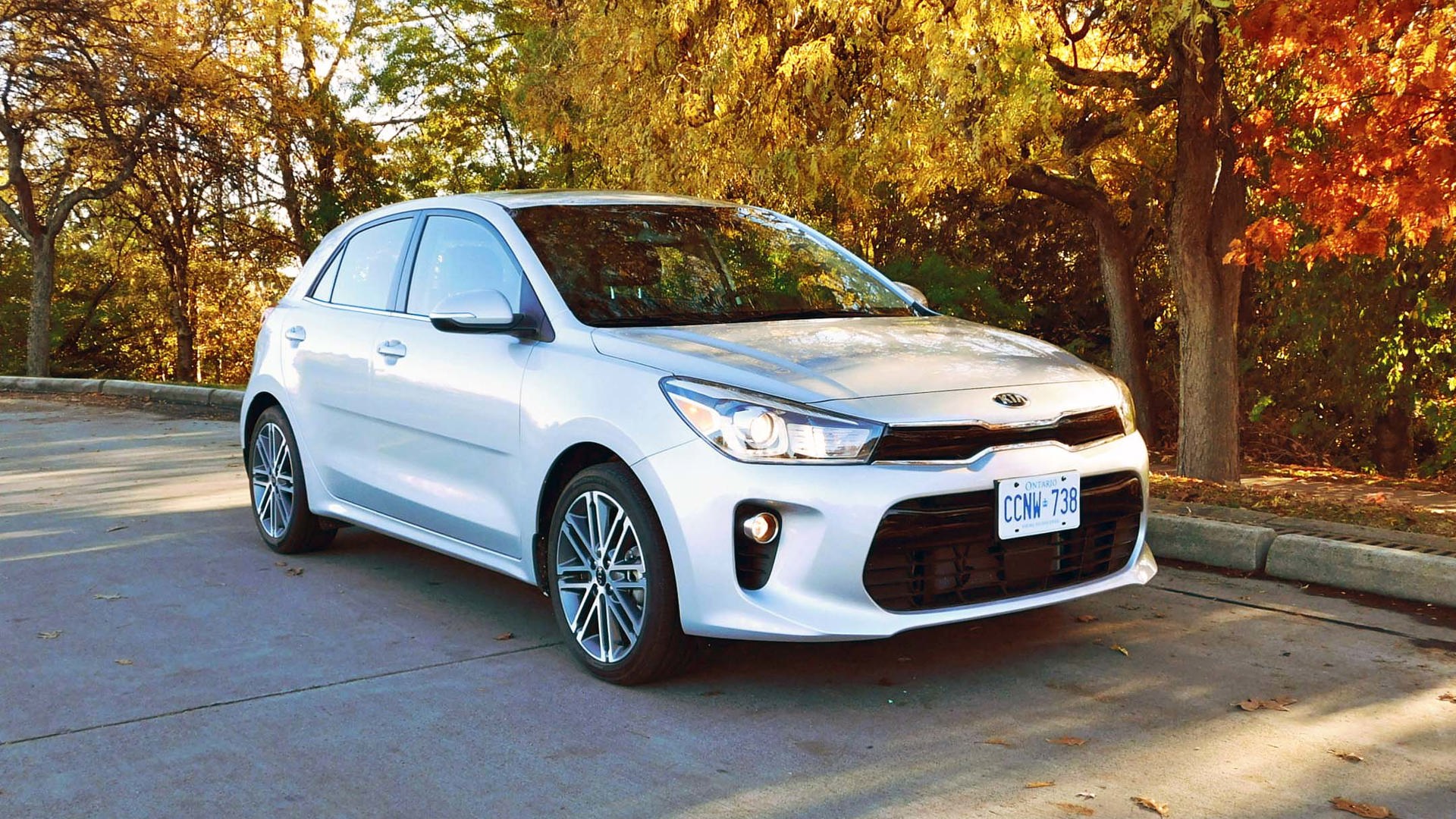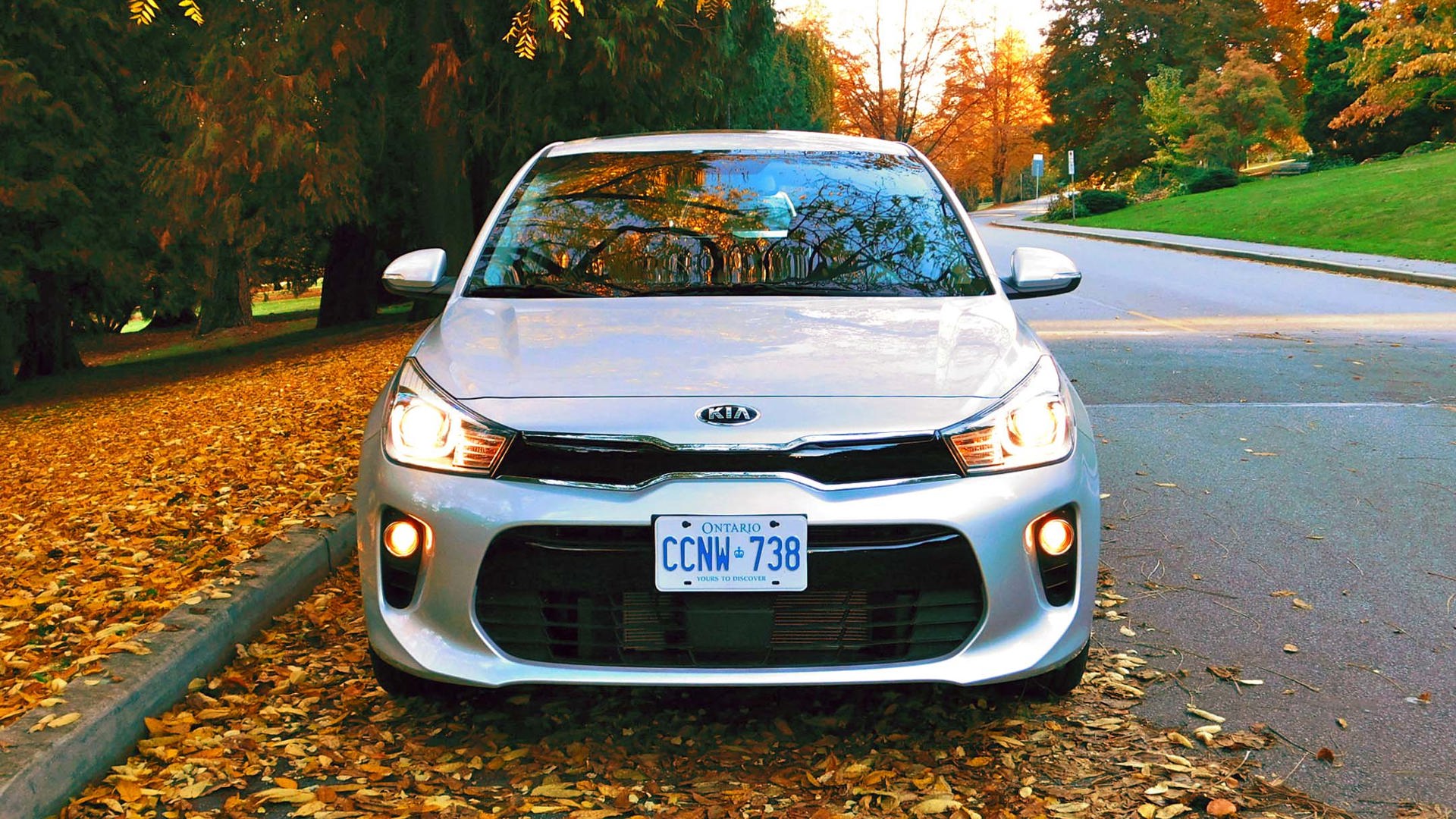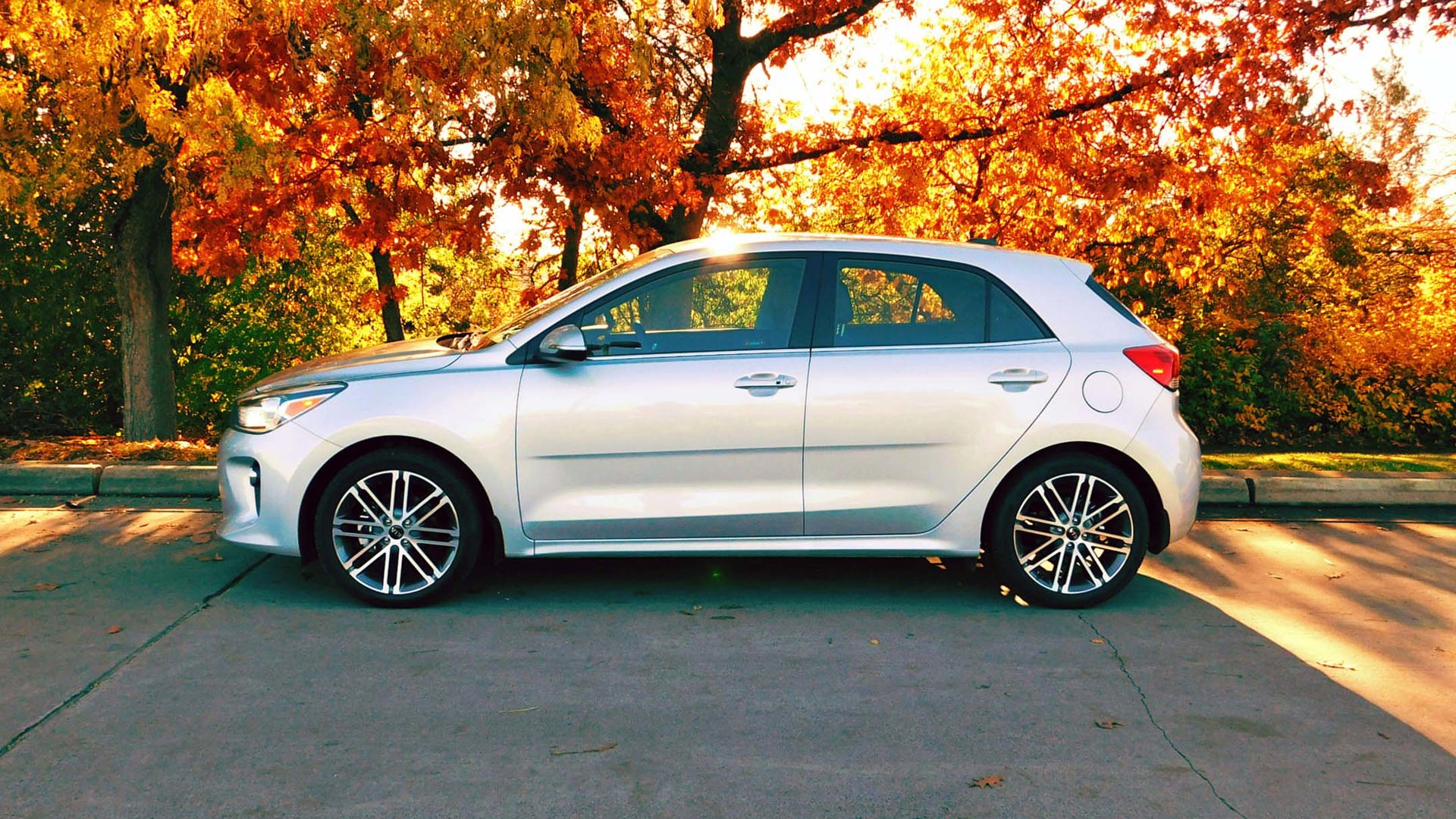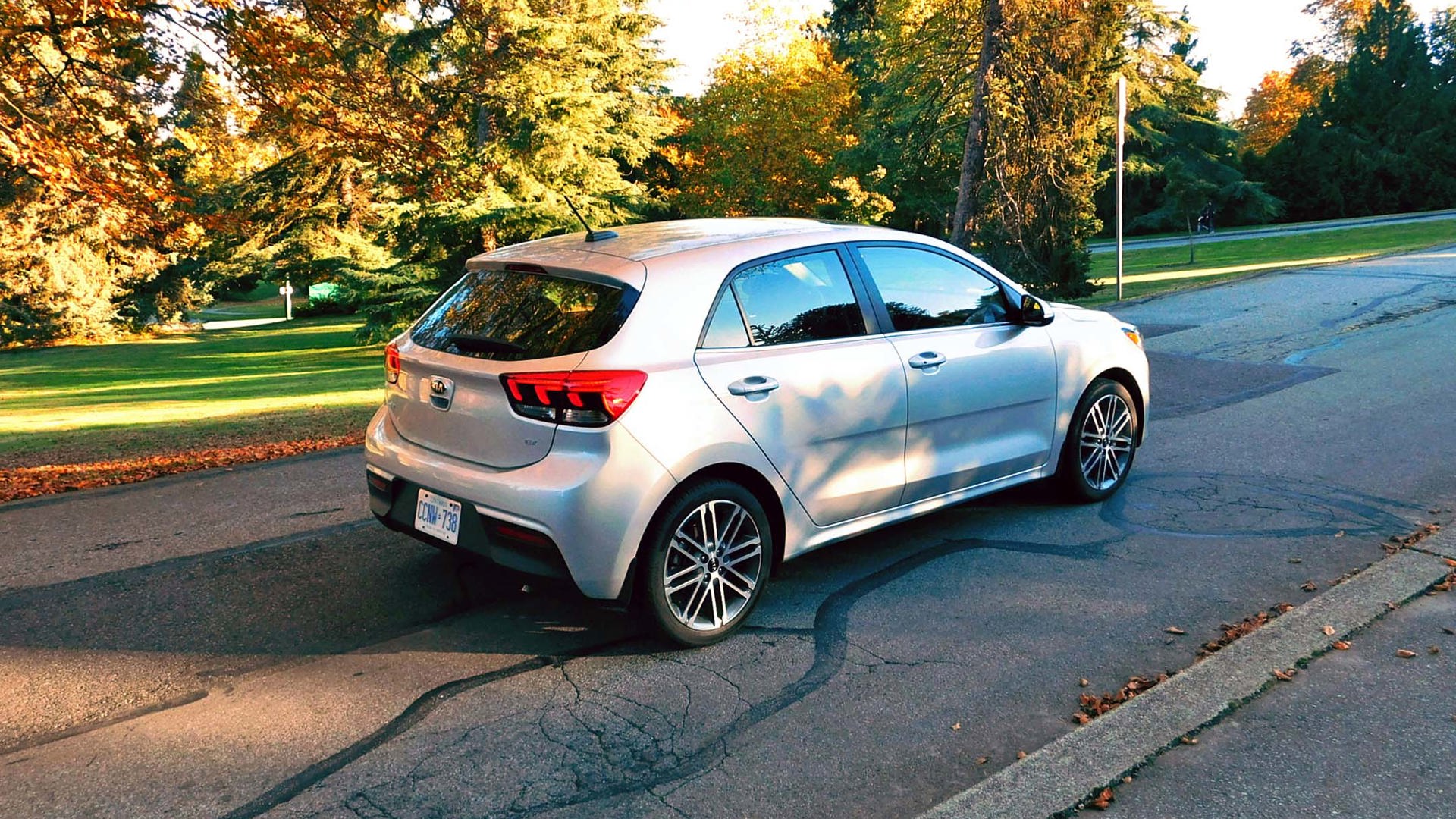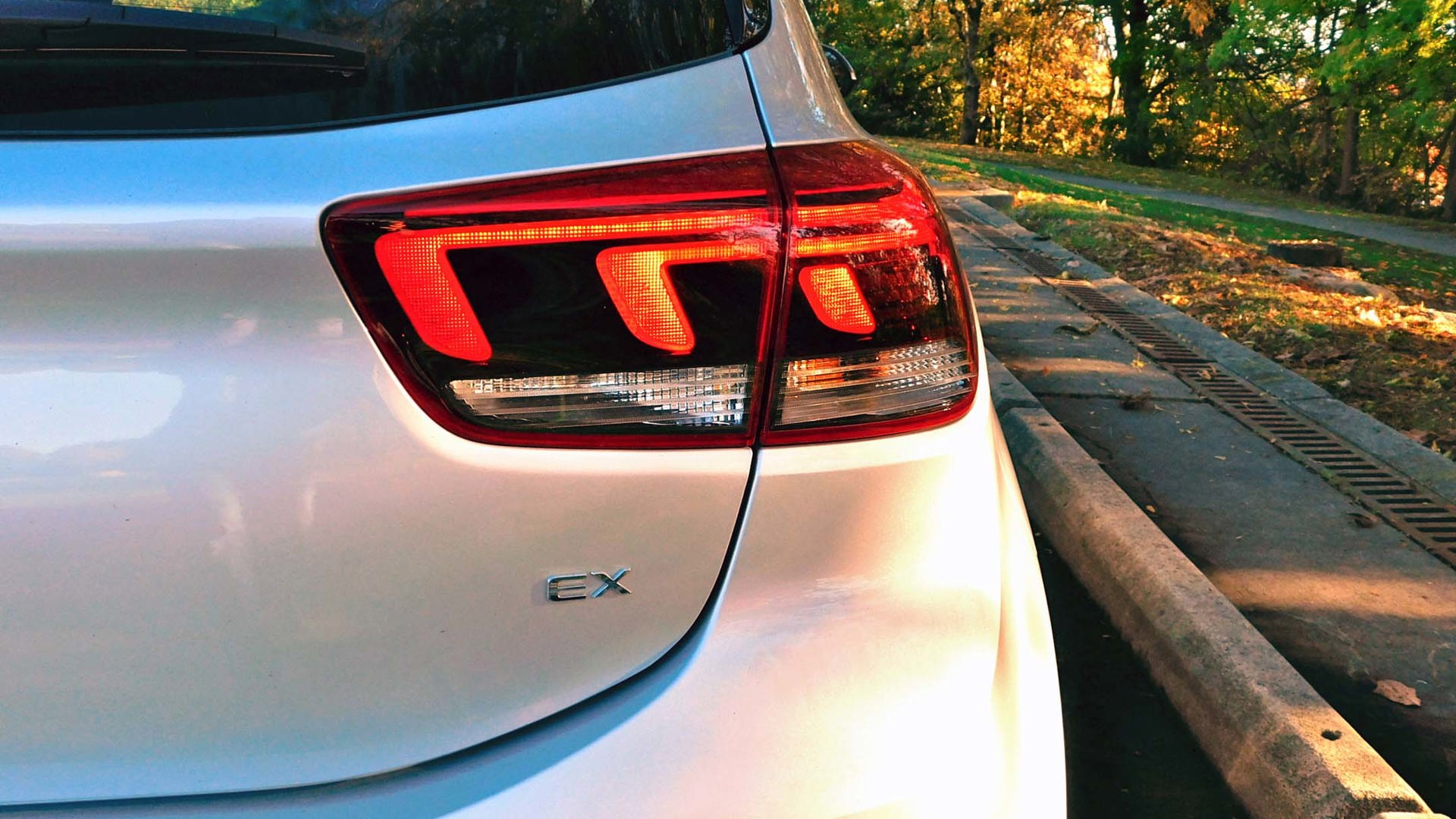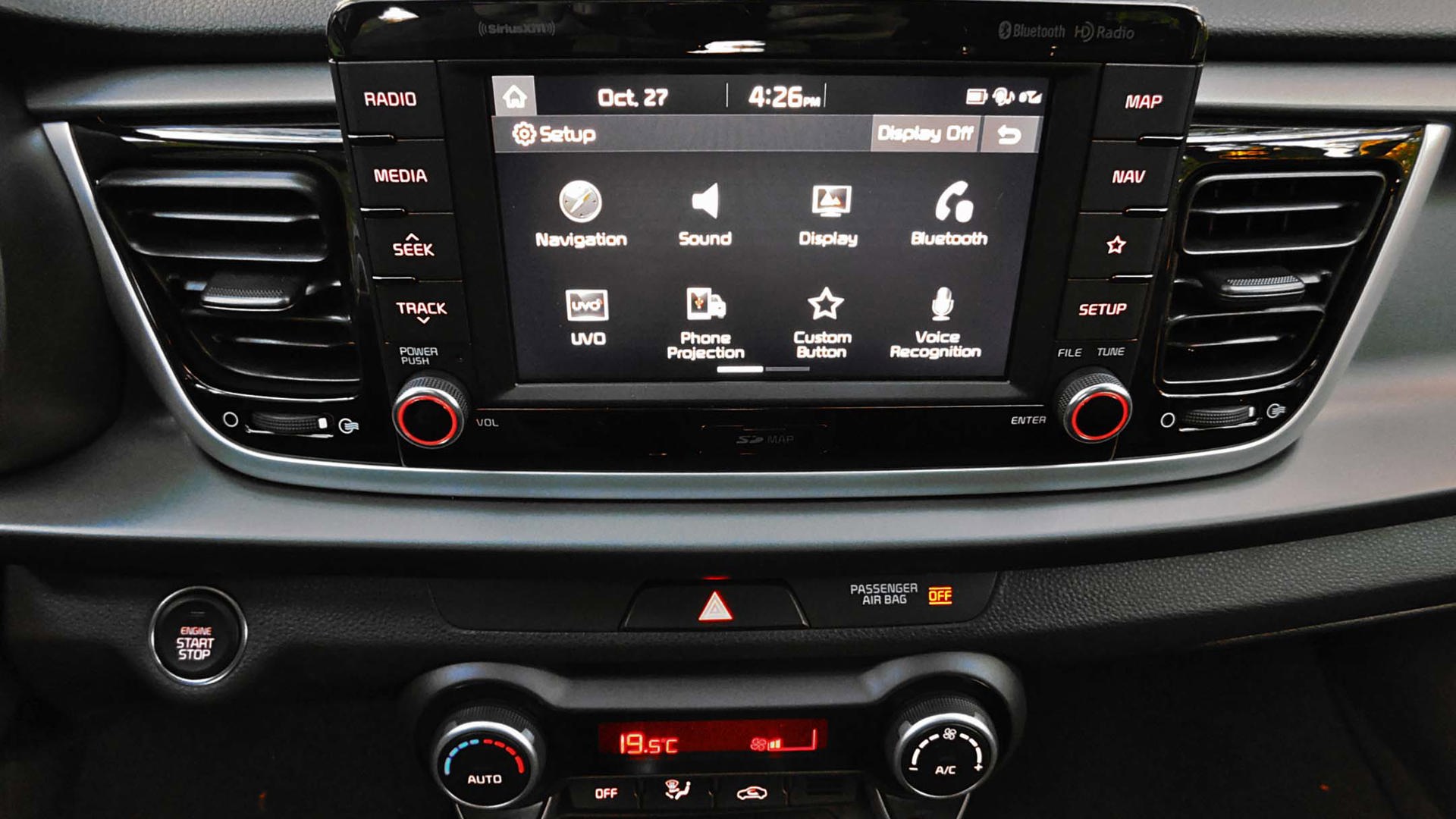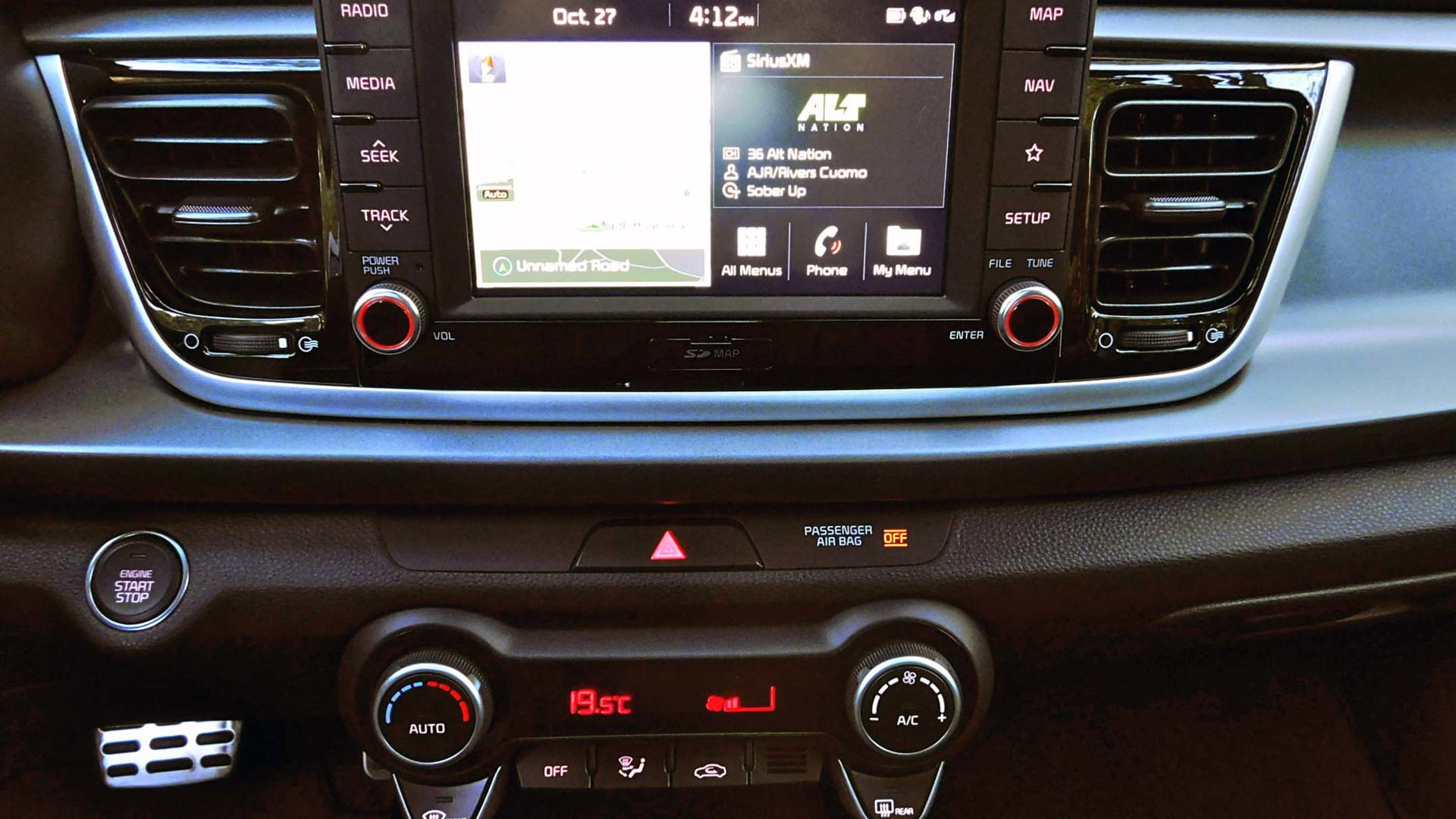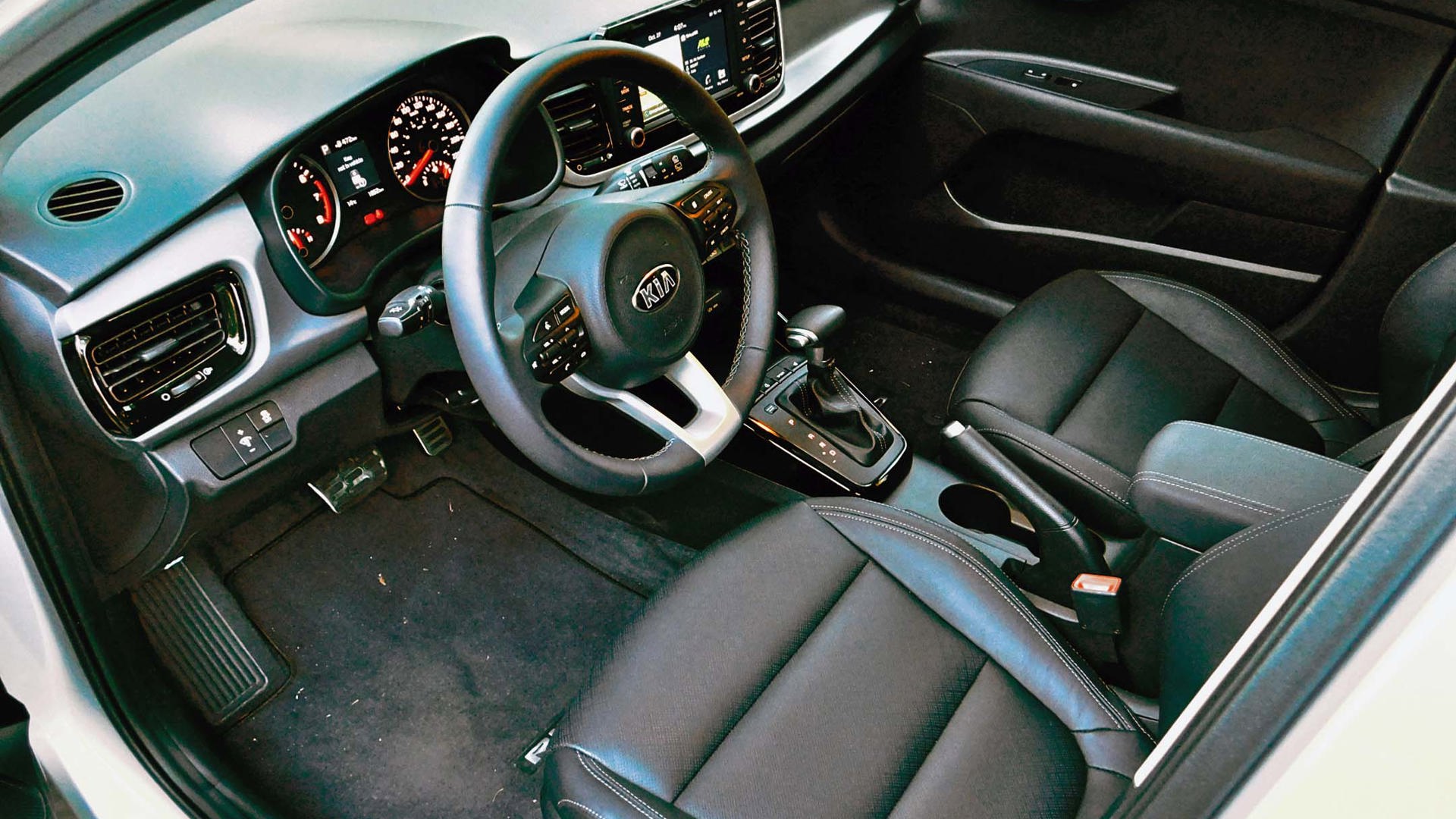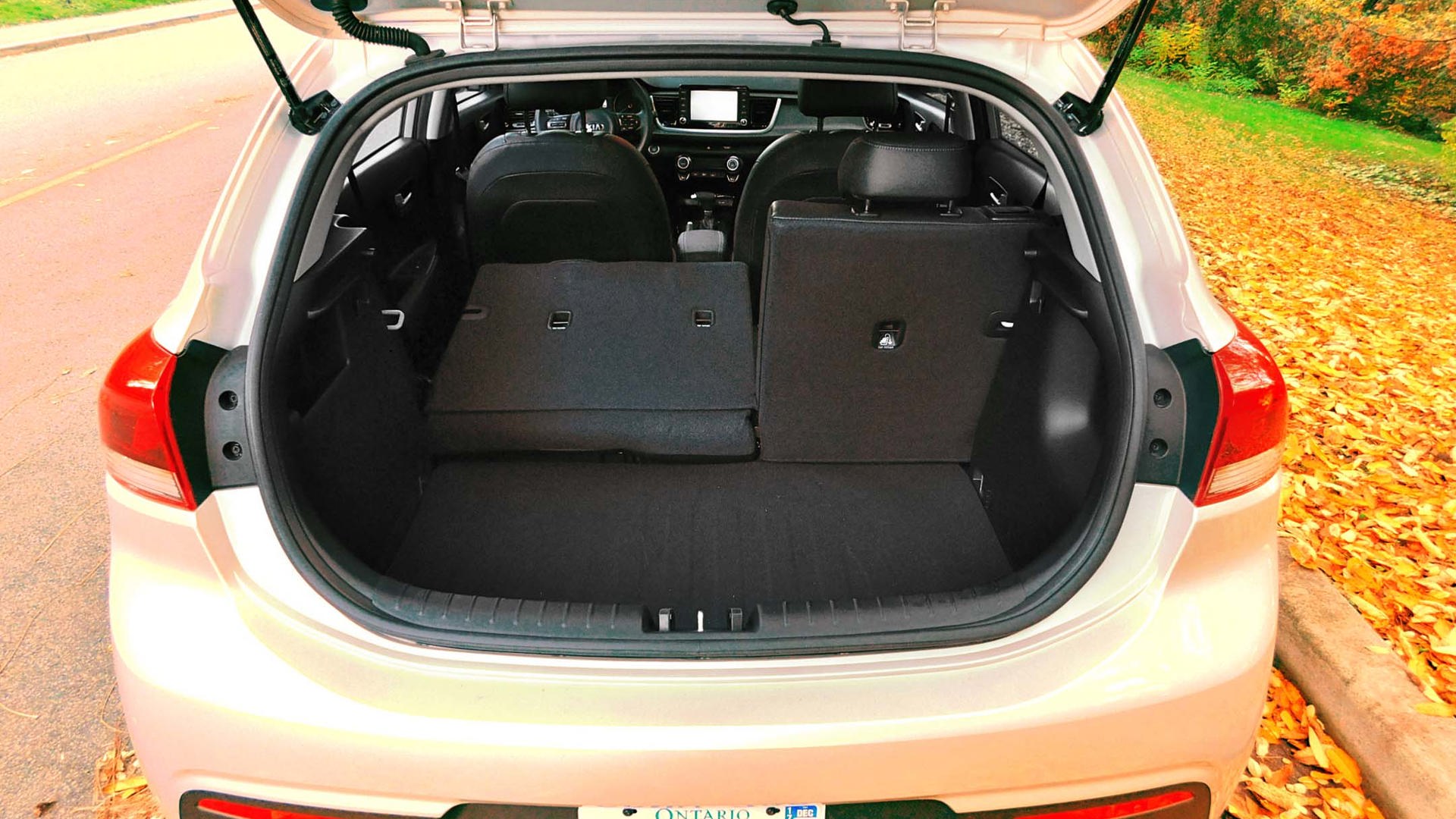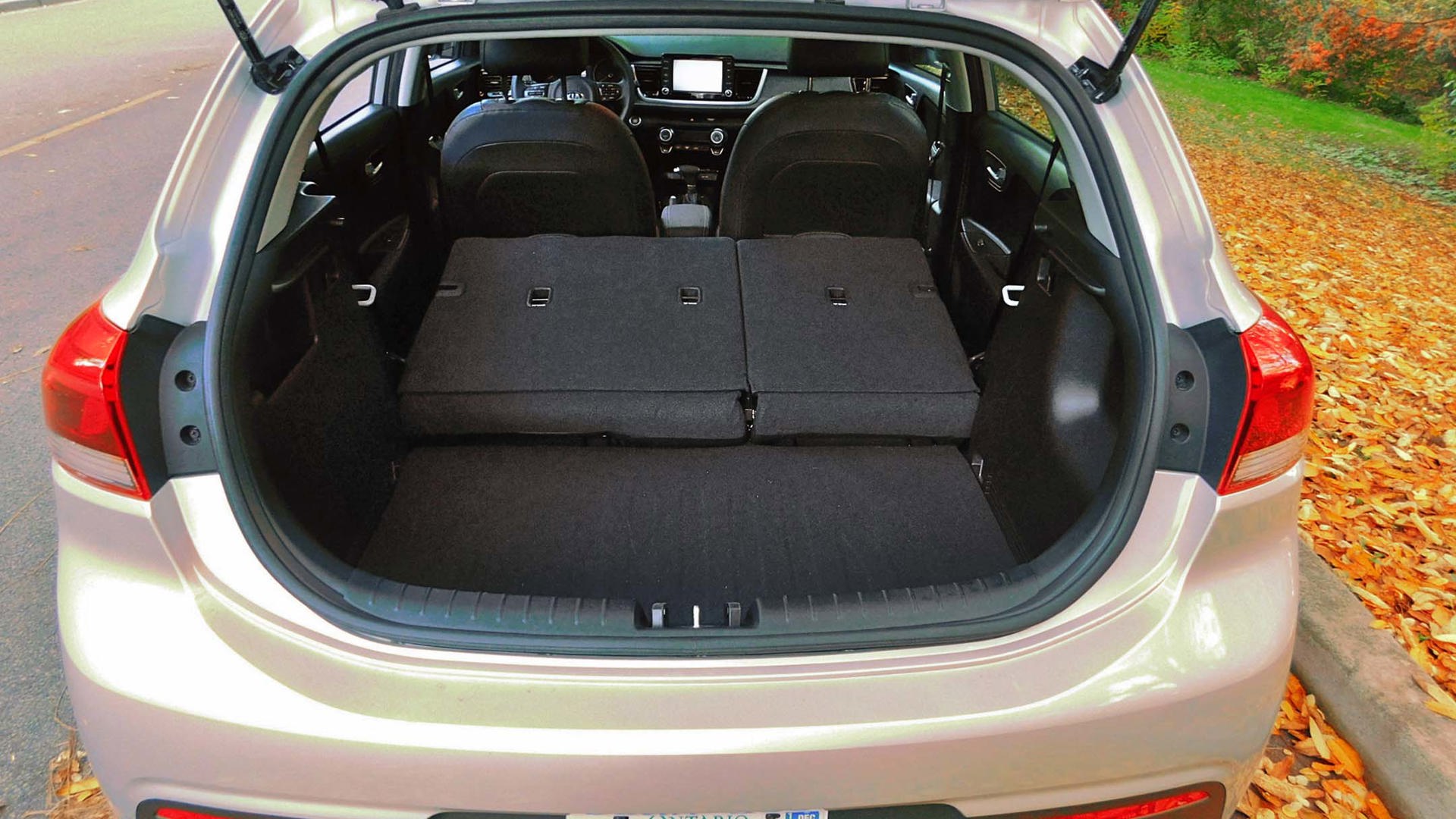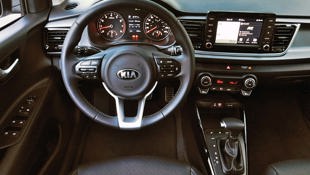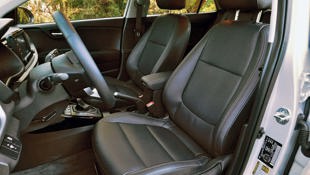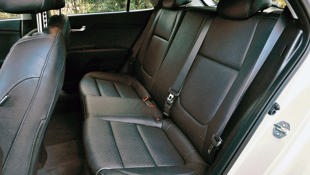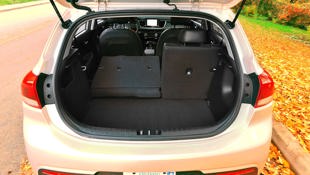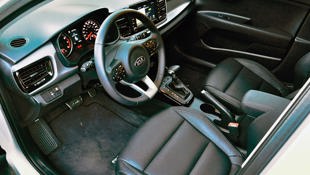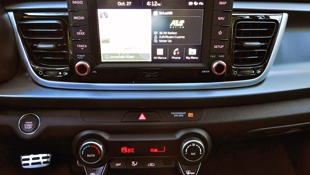 AutoTrader SCORE
AutoTrader SCORE
-
STYLING8/10
-
Safety8/10
-
PRACTICALITY7/10
-
USER-FRIENDLINESS7/10
-
FEATURES8/10
-
POWER7/10
-
COMFORT7/10
-
DRIVING FEEL8/10
-
FUEL ECONOMY7/10
-
VALUE8/10
All-new for its fourth generation, the 2018 Kia Rio 5 is a subcompact hatch that punches well above its weight in terms of style, comfort, and technology. Based on the same platform as the Hyundai Accent, and styled by Kia’s California and German design centres (led by Peter Schreyer), the new Rio 5 is lower and wider than most of its competitors. This means it loses a little practicality compared to, say, the Honda Fit or Nissan Versa, but it gains a much more aggressive, planted stance. Combined with its conservatively handsome sheet metal, this makes it look like a more expensive car than it is.
Eager, responsive and really quite good fun to drive.
The impression carries over into the cabin too, thanks to touches like standard heated leather-wrapped steering wheel, heated seats, and LCD display audio with Bluetooth connectivity across the range – yes, even the base $14,995 LX model gets all these goodies. My test car was a far cry from the base model, being a top-of-the-range Rio EX Tech version, but even here, at a heady (for a subcompact) $23,745, the Rio 5 delivers a lot for the money.
Fun to drive
It’s hard to get too excited talking about platforms, but the Rio 5’s new underpinnings deliver in two key areas: rigidity and soundproofing. The bank-vault solidity, crisp handling, and quiet ride you get in premium marques comes from having a stiff structure and generous soundproofing, and the new Rio 5 scores right up there thanks to its liberal use of high-tensile steel and what must be equally liberal use of sound-deadening materials.
Under the hood is a slightly revised version of Kia’s 1.6L Gamma engine, which in the 2018 Rio 5 produces 130 hp and 119 lb-ft of torque, delivered through either a six-speed automatic or six-speed manual transmission (unfortunately for manual fans, this option is only available in the bottom LX and LX+ trims). At idle the engine is impressively quiet, to the point that I sometimes didn’t realize it was running at all (I’d trot out the old “sewing machine” cliché here, but I swear my old Kenmore sewing machine is a good deal louder than an idling Rio). Under hard acceleration the engine is decidedly louder and perhaps a little buzzy, but it’s by no means unpleasant-sounding, and it revs willingly. My test car’s automatic transmission was well matched to the engine, handling shifts quickly and smoothly.
The revisions to the engine for 2018 have traded a bit of peak horsepower for more grunt in the meat of the power band, so it feels strong at low engine speeds and deals effortlessly with the cut-and-thrust of city traffic. Highway acceleration takes a little more work (the Rio’s 0–100 km/h acceleration time is pretty average for the segment at somewhere around 10 seconds), but you won’t have to work too hard to pay the fuel bills: Official city/highway fuel consumption ratings with the automatic transmission are 8.5 / 6.4 L/100 km, and my real-world results were right in line with this, with a city fuel consumption of 8.7 L/100 km and a mixed average of 7.4 by the end of the week.
There’s nothing particularly sophisticated about the Rio’s suspension, which features the usual MacPherson struts up front and a torsion beam setup in the back, but it’s well tuned, offering sporty handling and the kind of reassuring highway stability usually associated with larger cars. The ride is on the firm side, especially with my test car’s 17-inch alloys and low-profile P205/45R17 tires (lower trims get P185/65R15 steel or alloy wheels), but it’s never what you’d call harsh, even on Vancouver’s often lumpy side streets.
Overall, the Rio feels eager, responsive and really quite good fun to drive.
An upscale interior
In the cabin, Kia does an impressive job of creating an upscale-feeling experience. The materials used aren’t anything out of the ordinary – as expected in the segment, pretty much everything is built of rigid plastics – but the finishes are top-notch, the style is clean and thoroughly modern, everything fits together nicely, and the ergonomics are mostly excellent (okay, I’d prefer a little less of a reach to the infotainment touchscreen, and some of the touch points are a little small and fiddly).
There’s good space in the front seats, the steering wheel tilts (and telescopes in higher trims), and there’s decent space in the back. I’m 5'11", and with the driver’s seat set to my preference I was able to sit comfortably behind myself. I was expecting rear headroom to be tight thanks to the car’s low-slung stance, but there was actually a good handful of clearance above my noggin. There’s plenty of foot room under the front seats too, and the only dimension that felt a bit tight was legroom, with my knees just brushing the front seat.
Luggage space isn’t nearly as capacious as the Honda Fit or Nissan Versa, but it was still perfectly adequate to swallow a couple weeks’ worth of groceries under the cargo cover (Kia claims 493 L with the rear seats up, but other stats I’ve seen quoted 325 L, and that seems more believable if you’re not stacking things up to the roof). The rear seats have 60/40 split folding capability to accommodate large or ungainly cargo.
Areas with room for improvement in the cabin include the door armrest padding (the armrests are soft-skinned, but not really padded) and the seat cushion geometry (I found the squab a little short and peculiarly angled for optimal comfort). The driver’s seat is height-adjustable though, so that helps.
Tech, features, and pricing
In terms of tech and features, the Rio gives a little here and withholds a little there. On the positive side of the ledger, every Kia Rio 5 gets the aforementioned standard heated steering wheel (if you’ve never tried a heated steering wheel on a cold day, you really must), heated seats, four-speaker display audio with satellite radio, and Bluetooth connectivity. As well, all Rios get a back-up camera (with dynamic guidelines in my test car), auxiliary and USB ports, power locks, power windows, heated power side mirrors, and remote keyless entry.
The LX+ ($16,595) adds air conditioning, steering wheel-mounted cruise control, illuminated vanity mirrors, and exterior splash guards (the automatic transmission is another $1,400).
The EX is perhaps the sweet spot, coming in at $20,945 and adding automatic transmission, automatic climate control, six-speaker audio, seven-inch infotainment display (rather than five-inch), Android Auto and Apple CarPlay smartphone integration with UVO connectivity, supervision instrument cluster, push-button start, front centre armrest, telescoping steering, 15-inch alloy wheels, projection headlights with LED daytime running lights, fog lights, power sunroof and a few other items. It’s just a shame you can’t get this package with the manual transmission.
My test car’s EX Tech ($23,745) trim adds things like perforated leather upholstery, alloy pedals, navigation (presumably for those who don’t want to access their phone’s navigation through the Android Auto or CarPlay interface), 17-inch alloys, LED taillights and autonomous emergency braking. Kitted out like this, the Kia Rio is genuinely nicer from a creature-comfort perspective than, say, a basic leatherette-upholstered BMW 2 or 3 Series (it’s arguably as well-built as a BMW, too – Kia is the first non-premium brand to earn consecutive JD Power Initial Quality Study awards). But by withholding that last piece of gear (the emergency autonomous braking) from all but the most expensive trim, Kia cedes a certain amount of safety high ground to the likes of Toyota, which offers autonomous braking as part of its Safety Sense system in all trims levels of the competing Yaris subcompact.
Conclusion
Overall the Kia Rio 5 is an impressive subcompact with style, driving dynamics and standard convenience features at or near the top of its class. It pays a price for that style in terms of practicality, and it lags some of its competitors in terms of standard safety technologies, but it’ll still do most everything you want of it, and in better comfort than you’d expect in this segment. It was one of my votes for best city car, and if you’re shopping for a subcompact car it’s definitely one worth considering.
| Engine Displacement | 1.6L |
|---|---|
| Engine Cylinders | I4 |
| Peak Horsepower | 130 hp @ 6,300 rpm |
| Peak Torque | 119 lb-ft @ 4,850 rpm |
| Fuel Economy | 8.5/6.4/7.5 L/100 km city/hwy/cmb |
| Cargo Space | 493 L |
| Model Tested | 2018 Kia Rio 5-Door EX Tech |
| Base Price | $23,745 |
| A/C Tax | $100 |
| Destination Fee | $1,560 |
| Price as Tested | $25,605 |
|
Optional Equipment
$200 – Ultra Silver premium paint $200
|
|
